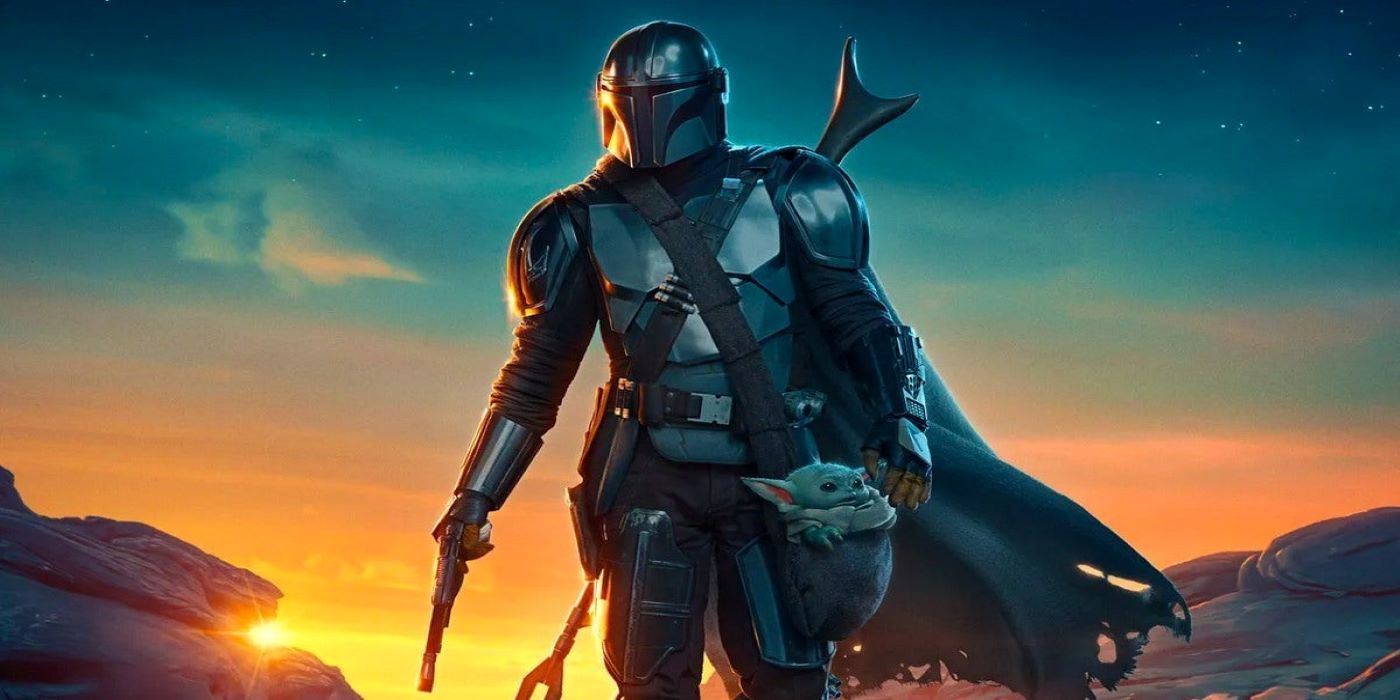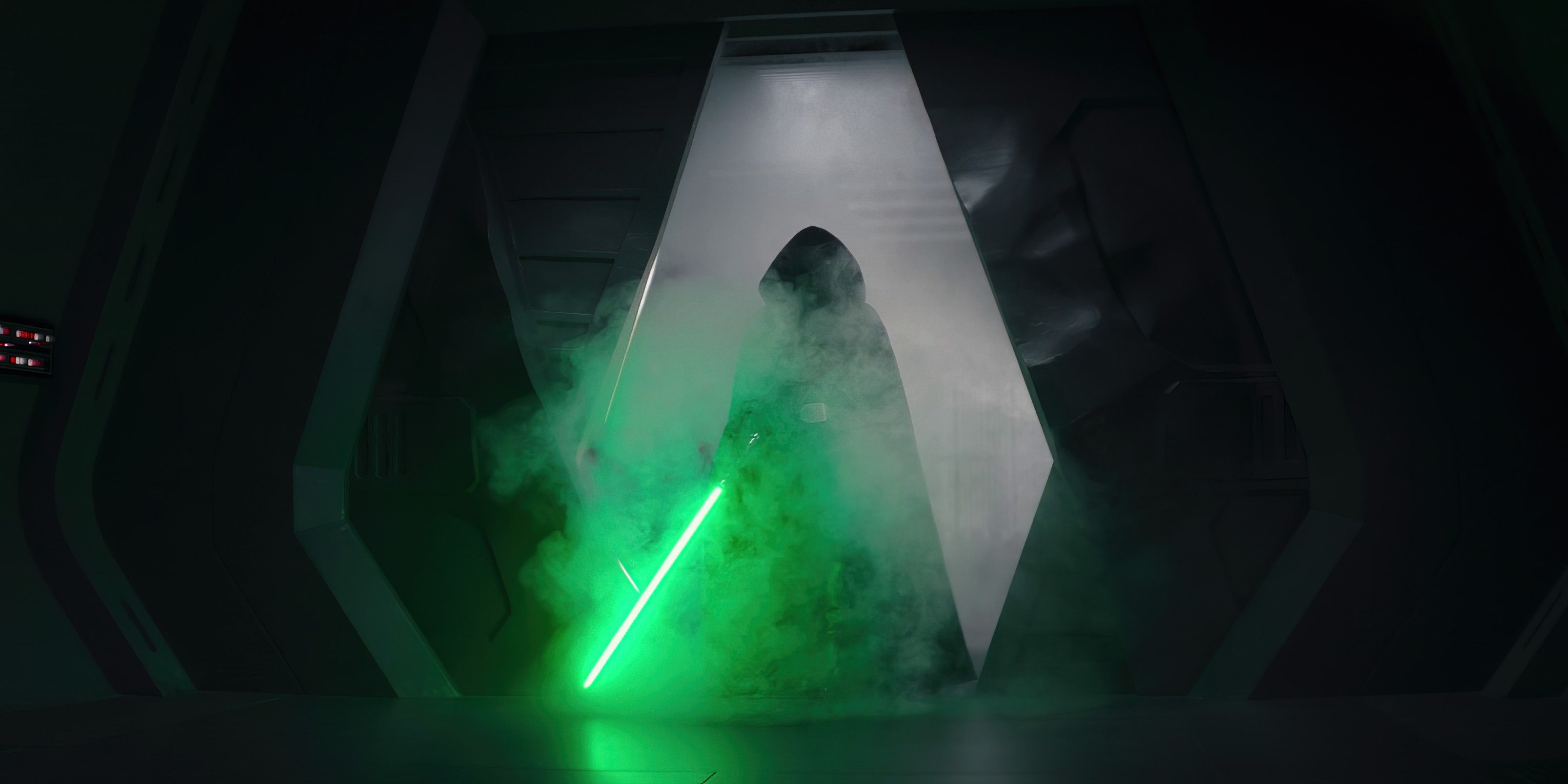It’s fair to say that everyone was shocked by that ending to season 2 of The Mandalorian. When the sole X-Wing lands, Ludwig Goransson’s score swells, Grogu’s ears perk up and so to do the hairs on the back of every fans' neck. Be warned, full spoilers below.
From his origins as a tempestuous teenager on Tatooine, to Jedi Knight and finally tormented Jedi Master, Luke Skywalker has been through several evolutions. Each stage is undoubtedly relatable in some form to fans, owing to the character's innate desire to help others - whether friend or foe. This trait is the reason why Luke’s latest appearance in the season finale of The Mandalorian is the best interpretation of the character yet.
There are similarities between this scene and the notorious Darth Vader cameo in Rogue One, both of which demonstrate the two characters’ immense skill with a lightsaber and the ease with which they harness the force in combat. Luke decimates the platoon of Dark Troopers with consummate ease, slicing through his foes as he glides through the ship. Each motion is fluid, effortless and deliberate. It’s the kind of elegance in battle fans envisioned Luke using in the years after his duel with Vader on the Death Star II, many of which were consigned to the Legends canon when Disney bought LucasFilm (or acted out in battles between action figures).
Most impressive, however, was Luke’s subtle use of the force to halt the collection of troopers who were busy battering the blast doors separating them from Mando, Grogu, and the rest of their group. Despite being on the floor above him, Luke disengages their attack using the force - his focus is always on protecting Mando’s group. Though it could be argued Luke's mere presence drew their attention away from the bridge, they become docile, lingering without any intent as they continue to face the blast doors they had been so close to breaching. They show no appetite to tackle Luke's imminent threat, nor do they prepare for an attack until he is right upon them. There’s one terrifying, overt hint to the extent of Luke’s ability to harness the force, as he crushes the final trooper. It’s red eyes extinguish and body contorts into a crumpled heap of Jawa salvage, rather than the elite enemy that had engaged Mando in a brutal battle earlier in the episode.
The Vader scene in Rogue One scratched a particular itch: to see Vader be the kind of Sith Lord that had granted him such a fearsome reputation in the original trilogy. Luke’s cameo is more than a moment of brief fan service. His conversation with Mando on the bridge, albeit brief, is pure Luke Skywalker. He sheathes his weapon and removes his hood, putting Mando’s group at ease. Let’s not forget the checkered past between the Jedi and Mandalorians, this could easily have escalated considering Mando’s attachment to Grogu, but Luke is compassionate. He understands the connection between the two, and though he intends to leave with Grogu, he respects their bond. He chooses his words carefully, disarming any distrust Mando might harbor, stating that he will protect the child "with his life" as Mando has done, that “talent without training is nothing” and that the child won't be safe "until he masters his abilities."
Having witnessed Grogu’s abilities and the lengths the Empire's remnants have gone to capture him, as well as discussing his past with Ahsoka Tano, Mando understands that this is the right thing to do. That said, given the audience's knowledge of what happens to Luke's Jedi Academy, fans are already theorizing where Grogu is by the time Kylo Ren is on the scene.
This version of Luke is the product of his journey in the original Star Wars trilogy. At the heart of Luke’s character is compassion, never more obvious than when he cast his lightsaber aside after defeating Darth Vader in Return of the Jedi. During this time period, after the fall of the Empire, Luke is in his element. He’s emboldened in his efforts to help force-sensitive individuals and prevent items falling into the hands of Imperial remnants. 2017’s video game Battlefront II gave a similar portrayal of Luke, where he saves Del Meeko, a member of the Empire’s Inferno Squad in spite of his allegiances, simply because he asked for help.
Similarly, in chapter 14 of The Mandalorian, Grogu reached out with the force in an attempt to communicate with other Jedi while meditating atop the temple on the planet Tython. It’s safe to assume the one who answered that call was Luke. Had Luke’s cameo simply been a demonstration of his devastating combat skills, it would have been an example of Luke Skywalker the legend – the all-conquering, infallible Jedi – rather than the complete character. Instead, through his compassion, good nature, and empathy for Mando and Grogu, fans are treated to the best version of the character. These moments contribute to his legend.
Mark Hamill recently called the cameo the ‘greatest gift’, and it was undoubtedly a treat seeing Luke back in live action during his prime years as a Jedi. Nowadays, thanks to the wonders of de-aging technology, no one’s ever really gone – but that doesn’t mean The Mandalorian or other Star Wars properties should make a habit of using it. Ultimately, it should be about servicing the story and this particular appearance served both the character and the story perfectly.


